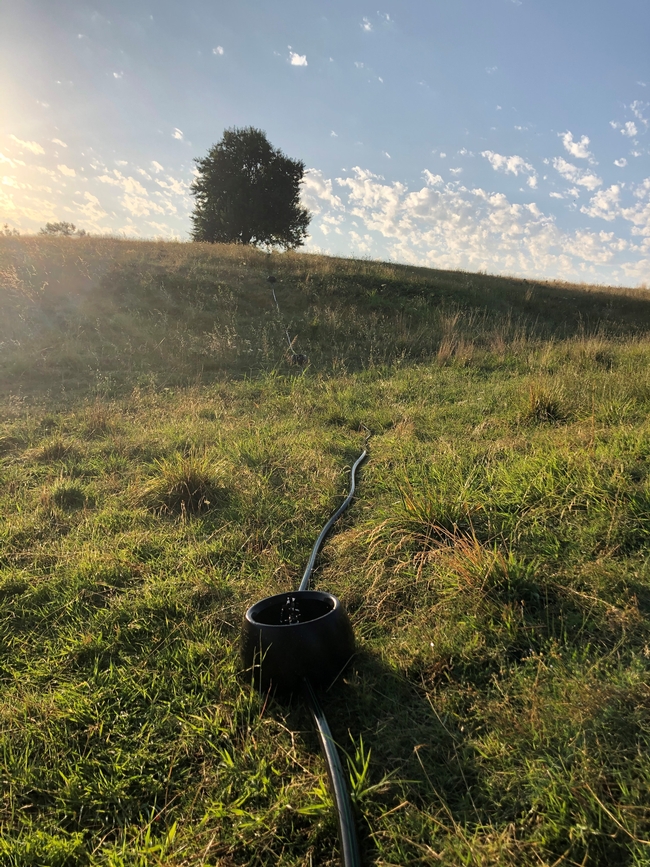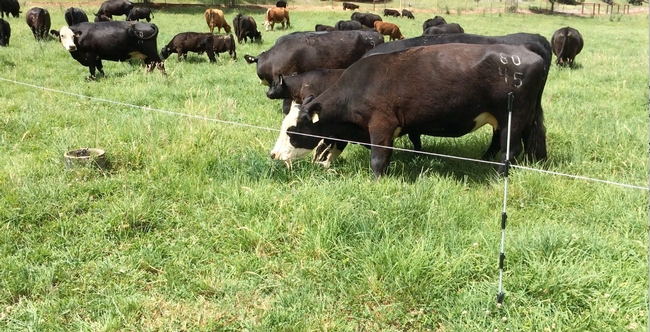For many ranchers in the Sierra foothills and Sacramento Valley, irrigated pasture is a critical component of our annual forage calendar. In many ways, irrigated pasture has replaced the historic practice of "following the green" - of taking sheep and cattle to mountain pastures during the summer months. Green summertime forage in the foothills and valley requires irrigation in our Mediterranean climate - and so many of us spend at least part of every day from April through October spreading water across our pastures.
Here in the foothills, these pastures do more than feed livestock. Large blocks of green vegetation provide landscape-scale firebreaks that protect rural residential communities. These pastures support a great deal of wildlife, as well - I consistently see wild turkeys, blacktail deer, song birds, and hawks (just to name a few species) on our pastures near Auburn. At least to me, a well managed irrigated pasture is a cool, green jewel amidst the summer-time brown of our foothill landscapes.
Truly productive irrigated pastures don't simply appear once we start applying water, though. No matter how much I water the annual grasses that grow on our rangelands, these plants have to die each year - that's what makes them annuals! Establishing irrigated pasture is similar to planting an other permanent crop - it requires soil preparation, infrastructure development, fertilizer application, and seeding of perennial forage species (like orchard grass, fescue, and clover).
Once planted, irrigated pasture requires careful management, as well. Our irrigation system is designed to put enough water in 24 hours onto the pasture to meet plant needs for ten days (in other words, our irrigation "sets" are for 24 hours, and our "rotation" brings us back to the same location in the pasture every ten days). We also manage our grazing carefully - matching our rest periods with the growth rate of our forage. When the grass is growing rapidly in the springtime, we can graze the same paddock every 25 days; in the heat of the summer when grass growth slows, our rest periods are longer to allow the plants to re-grow before we graze them again. And to protect water quality, we try not to irrigated underneath the livestock.
Obviously, the decision to establish irrigated pasture - or to incorporate it into our production systems - must include economics! Establishing pasture - even one that will last for 20-plus years - requires significant investment. Once established, we have to pay for water, depreciate our equipment, pay for labor, PAY OURSELVES!
This spring, I collaborated with Don Stewart at the Ag Issues Center at UC Davis to update two cost studies specifically analyzing foothill irrigated pasture. Click on the links below to access them:
Sample Costs to Establish or Re-establish and Produce Irrigated Pasture - Sierra Foothills
Sample Costs to Produce Irrigated Pasture - Sierra Foothills
On a related note, I'm also collaborating with Dr. Leslie Roche, Cooperative Extension Specialist in Rangeland Management at UC Davis, along with a number of other farm advisors throughout Northern California, on a research project examining a variety of irrigated pasture management strategies. We're looking at grazing management, water management, forage production, soil health, and a variety of other parameters - stay tuned for more information on this project as well!
Now I need to go out and move water....

